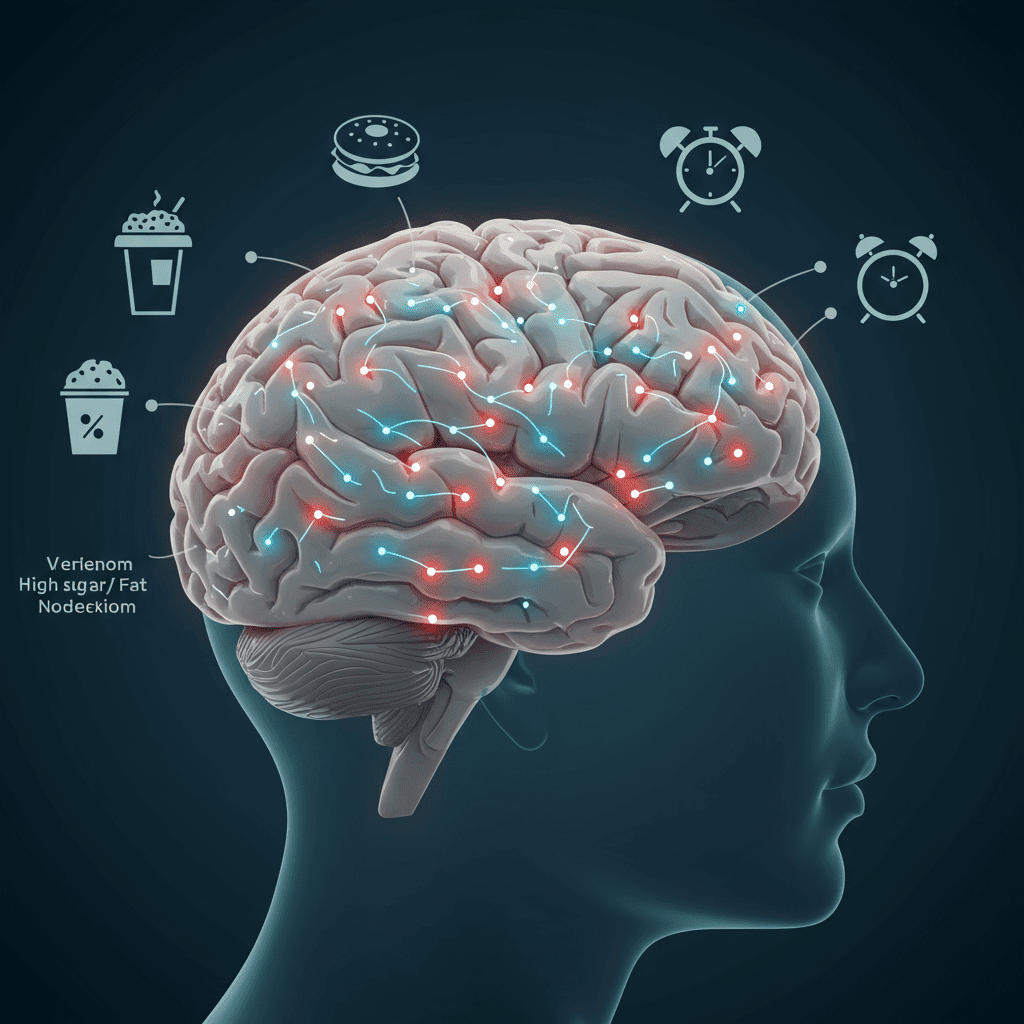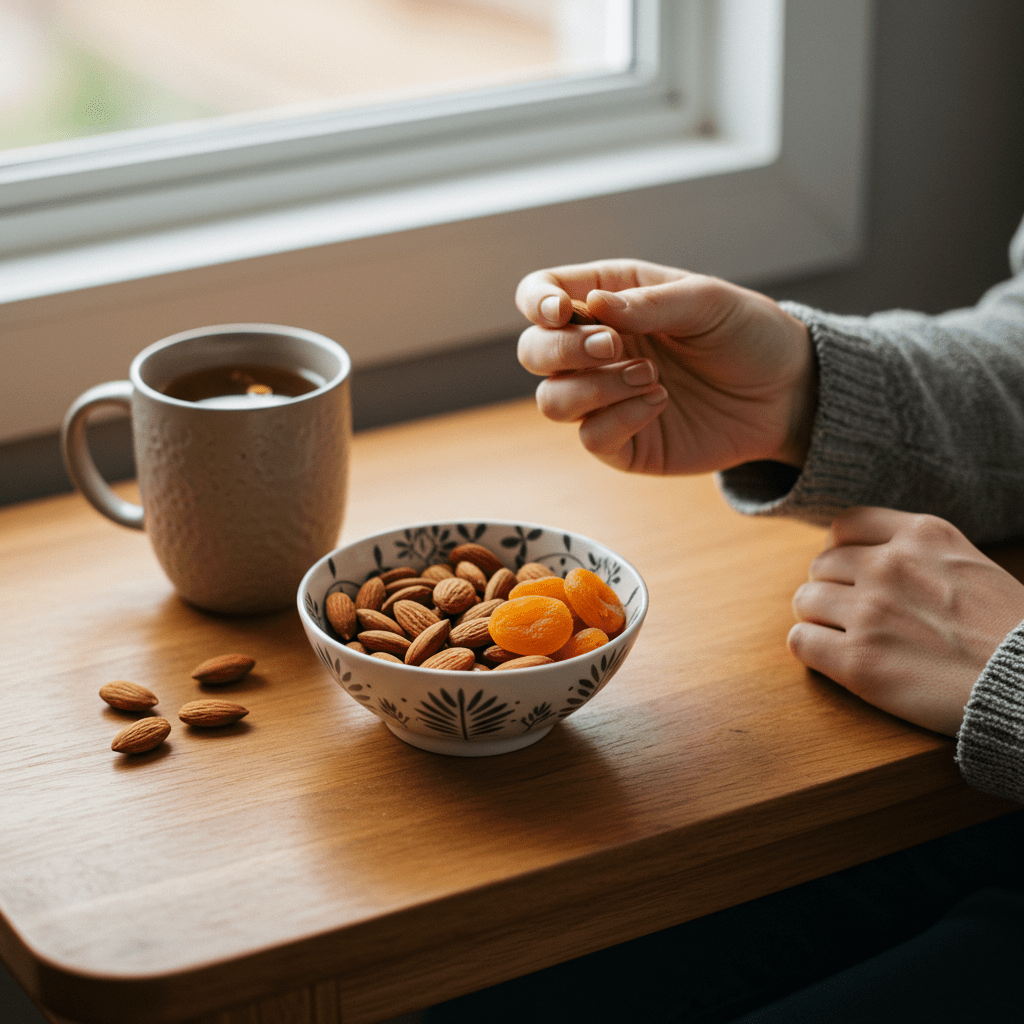Why We Eat When We’re Bored (And How to Stop)

It’s a familiar feeling: you’re not hungry, but you find yourself standing in front of the open fridge anyway.
Boredom eating is one of the most common concerns I hear about as a Registered Dietitian.
If you’re caught in this cycle, please know this: it’s not a sign of weakness or a lack of willpower.
It’s often a misplaced attempt to fill a void, whether that’s a need for stimulation, comfort, or simply a break from monotony.
Together, we’ll unpack the reasons this happens and, more importantly, I’ll provide you with actionable, evidence-based strategies to help you reconnect with your body’s signals and find more fulfilling ways to spend your time.
First, Why Do Our Brains Turn to Food When We’re Bored?

Our brains are wired to seek out novelty and engagement.
When we’re bored, we lack that stimulation.
As neuroscientist Dr.
Nicole Avena explains, food—especially hyper-palatable food high in sugar, fat, and salt—can trigger the release of dopamine, a neurotransmitter associated with pleasure and reward.
This creates a powerful neurological reward that your brain quickly learns to seek out.
A study published in Frontiers in Psychology (2015) found that boredom increases cravings for unhealthy foods as a way to self-stimulate.
So, when you reach for that bag of chips, you’re not just looking for something to do; your brain is actively seeking a dopamine hit to break the monotony.
Understanding this biological driver is the first step in approaching the issue without judgment.
Are You Actually Hungry or Just Bored?

Before you label your eating as ‘boredom,’ it’s crucial to rule out true, physical hunger.
As a dietitian, I often find that what people perceive as boredom eating is actually their body’s cry for fuel.
This is especially common if your meals are not well-balanced.
A meal that lacks staying power won’t keep you full, leading to powerful cravings a few hours later.
Research in the American Journal of Clinical Nutrition consistently shows that protein is the most satiating macronutrient, followed by fiber-rich carbohydrates and healthy fats.
Are your meals satisfying enough?
Ask yourself: Protein Power: Did my last meal have at least 20-30 grams of protein?
(e.
g.
, chicken breast, tofu, lentils, Greek yogurt) Fiber-Full: Did it include a good source of fiber?
(e.
g.
, vegetables, whole grains, beans, fruit) * Healthy Fats: Did I include a source of healthy fats?
(e.
g.
, avocado, nuts, olive oil) If your 3pm ‘boredom’ snack attack consistently follows a light salad at lunch, it might be your body telling you it needs more substance, not that you need more willpower.
How to Create a ‘Mindful Check-in’ That Works

When the urge to eat strikes, the most powerful tool you have is the pause.
This isn’t about restriction; it’s about creating a moment of awareness.
I call this the ‘Mindful Check-in.
‘ Instead of acting on autopilot, take 60 seconds to ask yourself a few gentle questions.
This simple practice interrupts the automatic brain-to-hand-to-mouth pathway.
Your 60-Second Mindful Check-In: 1.
Stop and Breathe: Take one deep breath, in and out.
2.
Check Your Body: ‘Where do I feel this urge?
Is it a gnawing in my stomach (hunger) or a restless feeling in my head (boredom)?
‘ 3.
Name Your Emotion: ‘What am I feeling right now?
Am I bored, procrastinating, stressed, or lonely?
‘ Naming the emotion can reduce its power.
4.
Ask ‘What Do I Truly Need?
‘: If it’s not food, what might actually help?
A stretch?
A chat with a coworker?
A glass of water?
A 5-minute break to listen to a song?
This check-in builds the skill of interoceptive awareness—the ability to understand your body’s internal cues—a cornerstone of intuitive eating, as described by experts Evelyn Tribole and Elyse Resch.
What Can I Do Instead of Eating?

If your ‘Mindful Check-in’ reveals you’re not hungry, you need a toolkit of appealing alternatives.
Simply telling yourself ‘don’t eat’ is ineffective.
You have to replace the behavior with something else.
I recommend creating a ‘Boredom Buster’ list and keeping it visible—on your phone, a sticky note on your monitor, or on the fridge.
Categorize your list to match your needs: Engage Your Mind (5-10 mins): Do a crossword puzzle, listen to a fascinating podcast, read a chapter of a book, or organize a drawer.
Move Your Body (5-10 mins): Do some gentle stretches, walk up and down the stairs, have a mini dance party to your favorite song, or walk outside for five minutes of fresh air.
* Connect or Soothe (5-10 mins): Call or text a friend, journal about your feelings, make a hot cup of herbal tea, or pet your dog or cat.
The key is to choose activities you genuinely enjoy.
According to Harvard Health Publishing, engaging in pleasurable, non-food-related activities can also provide a dopamine boost, satisfying the brain’s craving for reward in a healthier way.
What If I Still Want to Eat Something?

Sometimes, you’ll do the check-in and decide you still want the snack.
That is perfectly okay!
The goal is not to eliminate snacking, but to make it a more intentional and enjoyable experience.
Mindless eating robs you of the pleasure food can offer.
Try this Mindful Snacking Ritual: 1.
Plate It: Never eat out of the bag or container.
Put a serving on a real plate or in a bowl.
This act alone creates intention and helps with portion awareness.
2.
Sit Down: Move away from the kitchen or your desk.
Sit at a table without screens.
3.
Savor It: Pay attention to the first bite.
Notice the texture, the temperature, the flavors.
Chew slowly.
By giving the food your full attention, you’ll find that a smaller amount is often far more satisfying.
When you eat this way, you’re transforming a mindless habit into a moment of pleasure and self-care.
It also helps your brain register that you’ve eaten, which can lead to greater satisfaction.
Conclusion
Learning to manage boredom eating is a journey of self-awareness, not self-criticism.
It’s about building new skills and treating yourself with compassion.
Remember, the goal isn’t perfection; it’s progress.
By understanding your body’s true needs and finding fulfilling ways to engage your mind, you can build a more peaceful and intuitive relationship with food.
Start by practicing one small strategy, notice how it feels, and adjust as you go.
You have the power to feel more in control and find freedom from the cycle of mindless eating.
